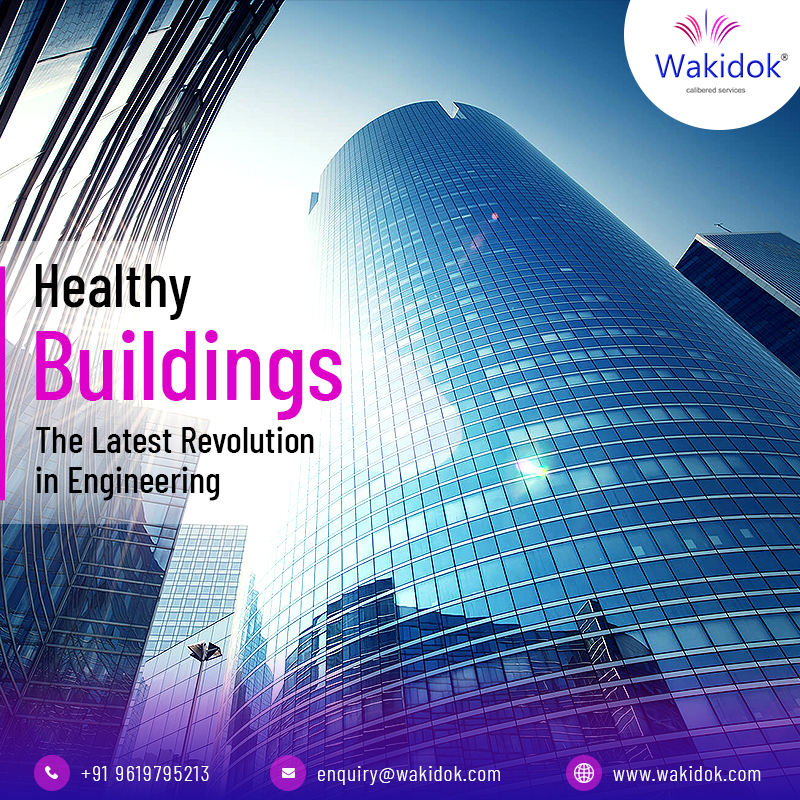Healthy Buildings – The Latest Revolution in Engineering
Have you ever visited a building and thought, ‘perhaps this portion of the building could have had a better design’, ‘there is not sufficient space in this room’ or ‘there is too much light here’? Well, almost everyday we are coming across examples of such buildings that don’t attune to our requirements or enhance our productivity levels. And certainly, these structures are far removed from the concept of healthy buildings.
Today, engineering consultants in India are coming up with the latest building designs that not only cater to the aspects of function and appeal but also the well-being of the people living inside. But you may be thinking – what is a healthy building? How is it beneficial to me?
Relax! In this blog, we’ll answer all your queries and give you a clear idea about healthy buildings.
What is Healthy Building?
Simon Turner, CEO of Healthy Buildings, has given an accurate definition of a healthy building – ‘A building that enables people inside to work at their maximum functionality with the highest efficiency.’
In other words, a building should enhance the comfort and overall well-being of the occupants so that they can show the highest levels of productivity through the works that they are engaged in. The buildings are engineered in a way that optimizes the efficiency of the occupants as well as the building, both at the same time. To accomplish this concept of a healthy building, the aspects of design, architecture and engineering are taken into consideration so that when it comes to providing maximum comfort to the human inhabitants, the building design does not act as an obstruction.
Essential Components of a Healthy Building
Engineering consultants in India or elsewhere, strictly adhere to a few factors when designing a healthy building. These are:
1. Thermal Health: Thermal health is the first factor that decides whether the building is providing optimum comfort to the occupants. Not just that but it also affects the mental health of the people, either positively or negatively. The thermal health of a building is based on temperature, humidity and other such conditions. While determining the building’s thermal health, engineers take an account of factors like building design, orientation, building geography, structure, ventilation strategies, occupant density and modes of ventilation.
2. Air quality: Whether at home or office, the indoor air quality must be excellent since people spend most of their time inside a building. Whether the indoor air quality is poor or excellent is determined from the chemical and biological components in solid, liquid and gaseous states that humans staying inside are exposed to everyday.
3. Safety and security: The mental well-being of occupants depends on the building’s safety and security to a great extent. No one can stay inside a building with a constant threat to security, isn’t it? Therefore, a healthy building must keep individuals safe from crimes and ensure maximum protection at all times. Safety and security aspect of a healthy building is determined from factors like:
- The building’s geographical location
- The area’s crime rate
- Accessibility of hospitals and police stations
- Safety equipment
4. Moisture: The health of the building is severely affected when there is the continuous presence of dampness from moisture. This leads to the growth of mold and mildew that eventually triggers allergen-attacks among the occupants. Thus, when constructing a healthy building, it is important to make sure that the building is free of moisture.
5. Dust and pests: Several statistics show that an adult inhales up to 100 mg house dust everyday on an average. Dust particles are a chief source of various skin and breathing problems and are dangerous for the building occupants. Although the presence of dust particles is unavoidable, when designing a healthy building, engineers must use materials that contribute towards a reduced accumulation of dust and pests like cockroaches, bugs, termites and so on.
Conclusion: Along with a few other parameters like ventilation, lighting, noise and water quality, engineering consultants in India are successfully designing healthy buildings and giving a new definition to architecture. Shift your focus from the conventional designs. It is time to have a more profitable asset, healthy building. To know more about our civil and structural design services, reach us on www.wakidok.com/civil-structural-design


